Which jobs make us happy?
Downloads
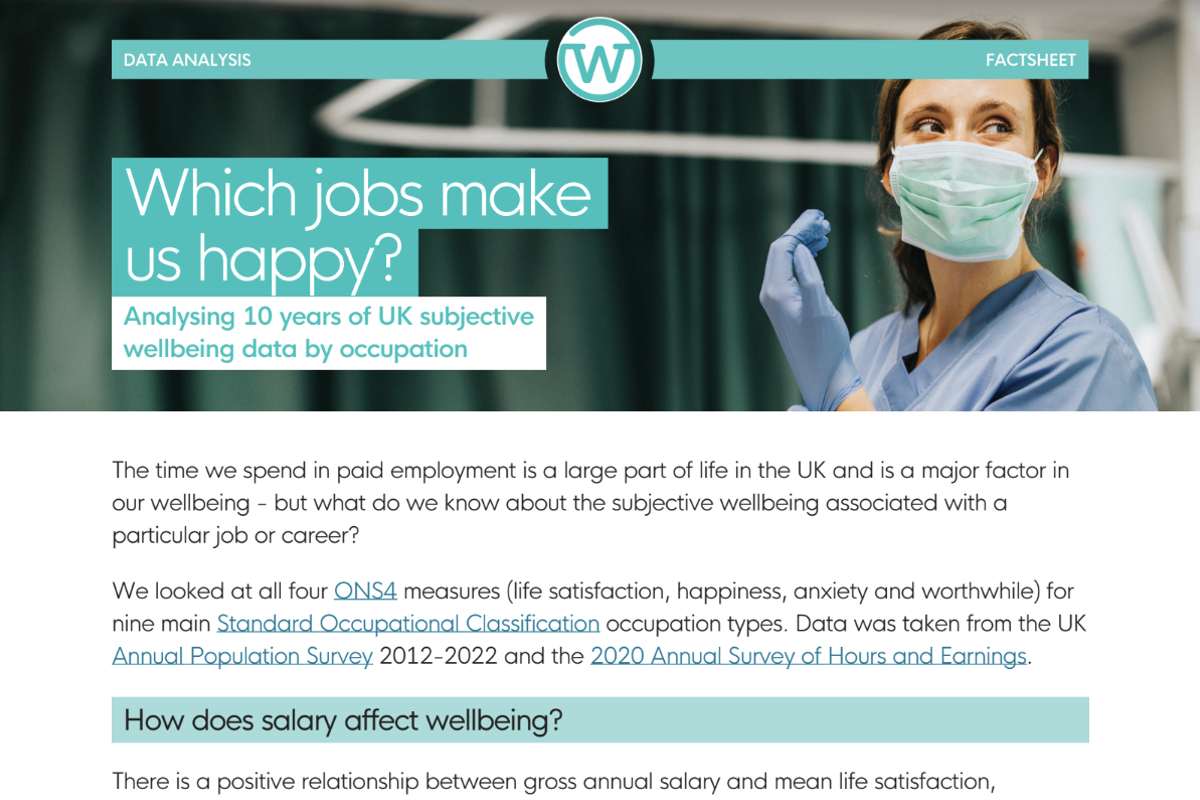
Introduction
The time we spend in paid employment is a large part of life in the UK and is a major factor in our wellbeing – but what do we know about the subjective wellbeing associated with a particular job or career?
We looked at all four ONS4 measures (life satisfaction, happiness, anxiety and worthwhile) for nine main Standard Occupational Classification occupation types.
Data was taken from the UK Annual Population Survey 2012-2022 and the 2020 Annual Survey of Hours and Earnings.
How does salary affect wellbeing?
There is a positive relationship between gross annual salary and mean life satisfaction, confirming previous analysis.
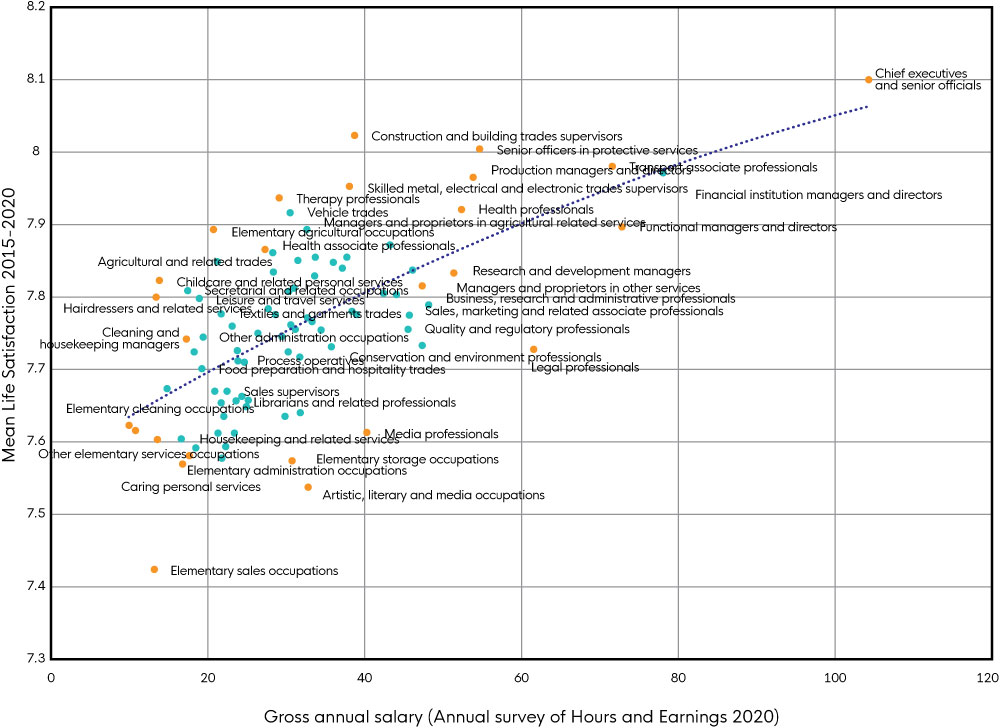
How does contract type affect wellbeing?
People report higher life satisfaction and lower anxiety levels when occupation is permanent (regardless of occupation type).
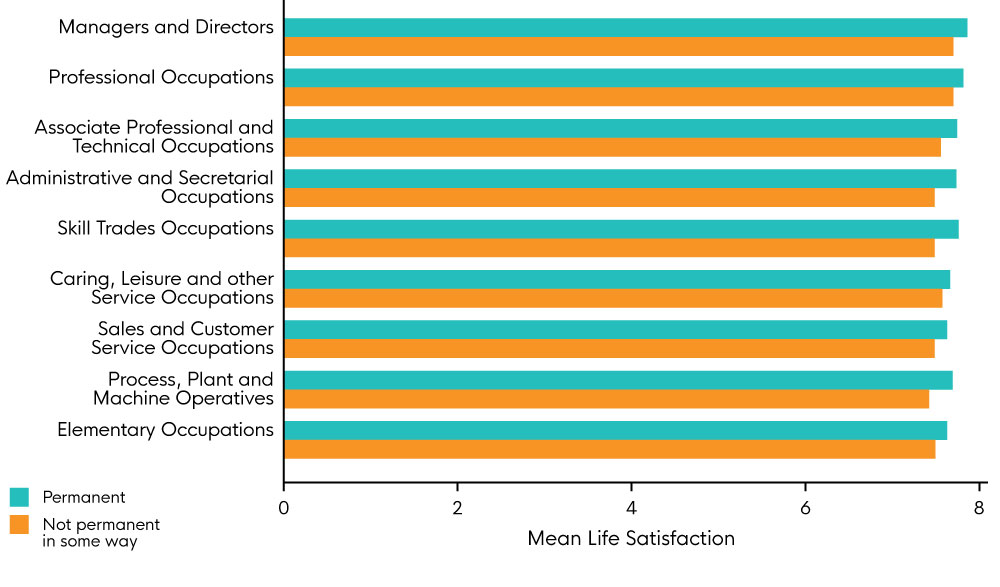
The sample size is relatively small.
How does job location affect wellbeing?
People report higher life satisfaction when they work at home or adjacent to home (for example in a garage or garden office).
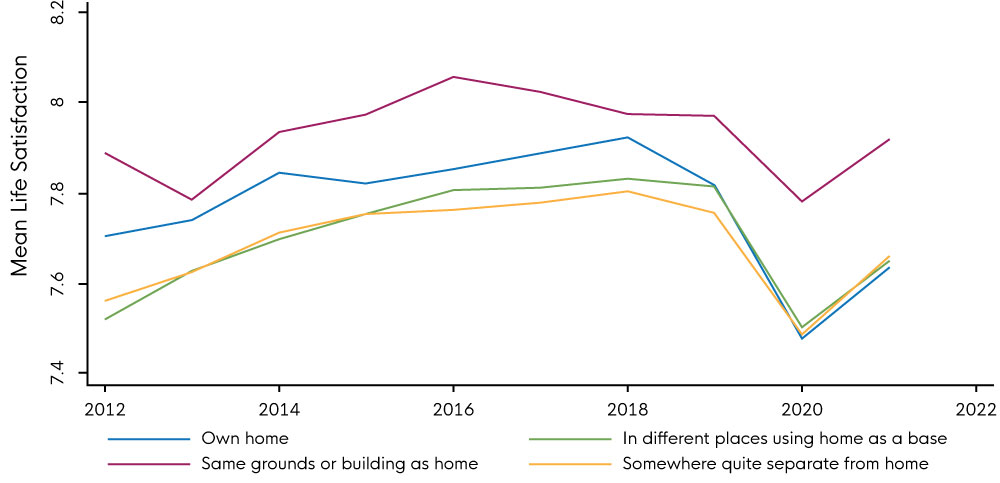
How has wellbeing changed over time across different occupations?
The findings reflect national population subjective wellbeing data (i.e. positive trend overall until 2020).
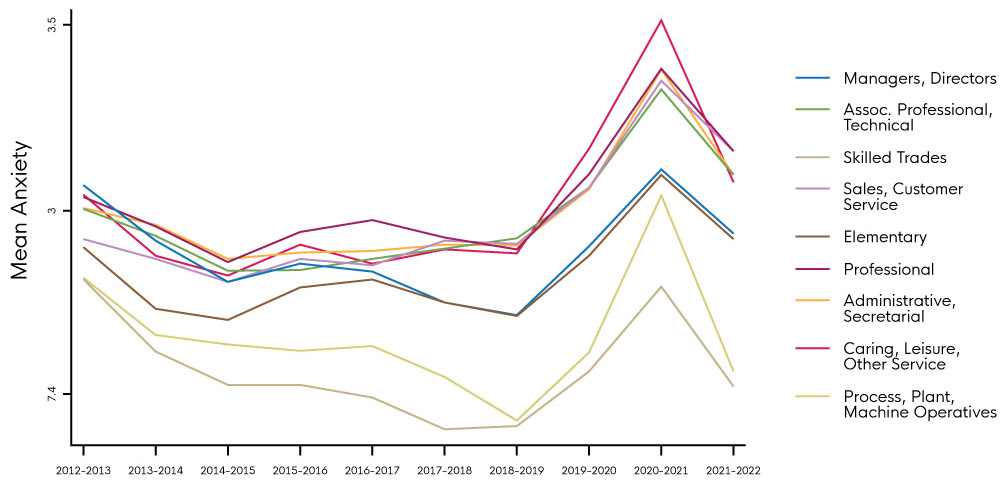
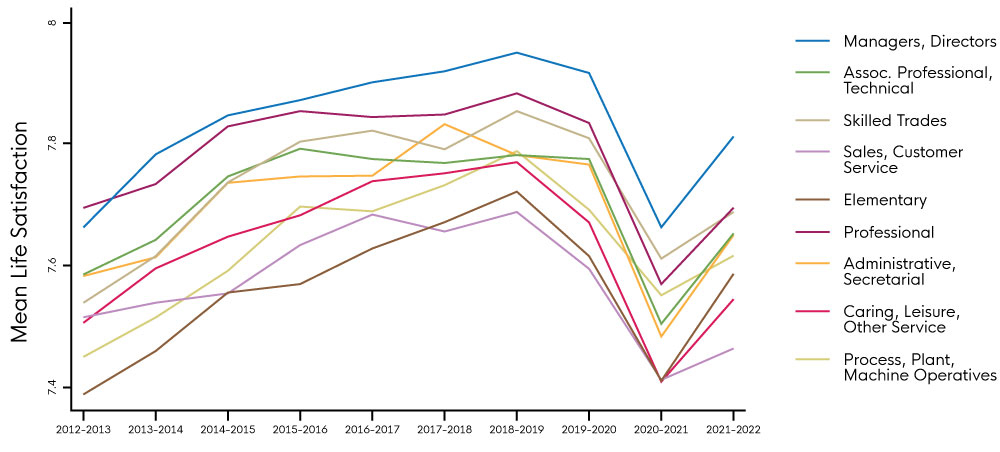
How has the Covid-19 pandemic affected the wellbeing of different occupations?
Professional Occupations, Associate Professional and Technical Occupations, and Administrative and Secretarial Occupations saw a higher drop in high life satisfaction scores during the pandemic.
Administrative and Secretarial Occupations are also those that saw the higher increase in high anxiety scores, along with Process, Plants and Machine Operatives Occupations.
How does wellbeing vary between occupations?
Managers and Directors present the highest mean levels of life satisfaction. They are also those with the highest percentage of permanent jobs, highest median gross annual earnings, and are most likely to frequently work at home.
Caring, Leisure and Other Services Occupations present the highest level of worthwhile and, during the pandemic, the highest level of anxiety. They are less able to work from home, have lower median gross annual earnings and lower percentage of permanent jobs. While these jobs provide a high sense of purpose, they also present a high risk of stress and less financial stability.
Using these insights
Occupations are very different, but with more granular data it was possible to identify differences in wellbeing, as measured by the ONS.
This allows us to:
- identify which sectors have managed better in response to Covid-19 and to interrogate the ‘how’ and ‘why’ further;
- be better informed about high-risk professions and create sector-wide wellbeing strategies to support productivity and mental health;
- explore ways to make core services sustainable and attractive careers.
Who is this data for?
- Those entering the workforce, looking to make informed career decisions.
- Secondary and higher education designing programmes to support employability.
- Employers across the private, public and charity sector looking to improve employee retention, productivity and wellbeing.
- Researchers interested in deepening analysis.
Suggested citation
Which jobs make us happy? Analysing 10 years of UK subjective wellbeing data by occupation. Factsheet, February 2023, What Works Centre for Wellbeing
- Introduction
- How does salary affect wellbeing?
- How does contract type affect wellbeing?
- How does job location affect wellbeing?
- How has wellbeing changed over time across different occupations?
- How has the Covid-19 pandemic affected the wellbeing of different occupations?
- How does wellbeing vary between occupations?
- Using these insights
- Suggested citation
Downloads
You may also wish to read the blog article on this document.
Downloads
You may also wish to read the blog article on this document.
![]()
[gravityform id=1 title=true description=true ajax=true tabindex=49]
